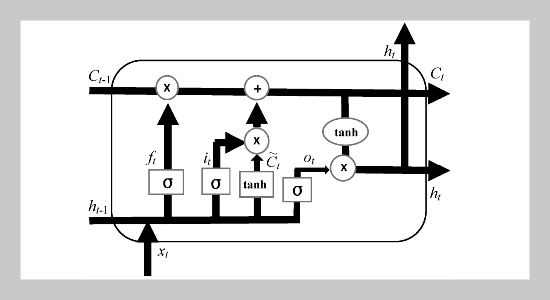- [1] H. L. Trieu, D.-V. Tran, and M. Le Nguyen. “Investi�gating phrase-based and neural-based machine trans�lation on low-resource settings”. In: Proceedings of the 31st Pacific Asia Conference on Language, Information and Computation. 2017, 384–391.
- [2] B. Marie and A. Fujita. “A smorgasbord of features to combine phrase-based and neural machine trans�lation”. In: Proceedings of the 13th Conference of the Association for Machine Translation in the Americas (Vol�ume 1: Research Track). 2018, 111–124.
- [3] Y. Zhang, Y. He, and L. Zhang, (2023) “Recognition method of abnormal driving behavior using the bidirec�tional gated recurrent unit and convolutional neural net�work" Physica A: Statistical Mechanics and its Ap�plications 609: 128317. DOI: 10.1016/j.physa.2022.128317.
- [4] M. Akeel and R. Mishra, (2014) “ANN and rule based method for english to arabic machine translation." Int. Arab J. Inf. Technol. 11(4): 396–405.
- [5] J. Zheng, Z. Zhao, M. Chen, J. Chen, C. Wu, Y. Chen, X. Shi, Y. Tong, et al., (2020) “An improved sign lan�guage translation model with explainable adaptations for processing long sign sentences" Computational Intelligence and Neuroscience 2020: DOI: 10.1155/2020/8816125.
- [6] A. Jisi, S. Yin, et al., (2021) “A new feature fusion net�work for student behavior recognition in education" Jour�nal of Applied Science and Engineering 24(2): 133–140. DOI: 10.6180/jase.202104_24(2).0002.
- [7] S. Yin and H. Li, (2020) “Hot region selection based on selective search and modified fuzzy C-means in remote sensing images" IEEE Journal of Selected Topics in Applied Earth Observations and Remote Sensing 13: 5862–5871. DOI: 10.1109/JSTARS.2020.3025582.
- [8] K. Chen, R. Wang, M. Utiyama, and E. Sumita. “Re�current positional embedding for neural machine translation”. In: Proceedings of the 2019 Conference on Empirical Methods in Natural Language Processing and the 9th International Joint Conference on Natural Lan�guage Processing (EMNLP-IJCNLP). 2019, 1361–1367.
- [9] K. J. Hayworth, M. D. Lescroart, and I. Biederman, (2011) “Neural encoding of relative position." Journal of Experimental Psychology: Human Perception and Performance 37(4): 1032. DOI: 10.1037/a0022338.
- [10] F. Stahlberg, (2020) “Neural Machine Translation: A Review and Survey" Journal of Artificial Intelligence Research 69: 343–418.
- [11] S. Wu, D. Zhang, Z. Zhang, N. Yang, M. Li, and M. Zhou, (2018) “Dependency-to-dependency neural ma�chine translation" IEEE/ACM Transactions on Audio, Speech, and Language Processing 26(11): 2132–2141. DOI: 10.1109/TASLP.2018.2855968.
- [12] P. N. Murthy and S. K. Y. Hanumanthaiah, (2022) “A simplified and novel technique to retrieve color images from hand-drawn sketch by human." International Jour�nal of Electrical & Computer Engineering (2088- 8708) 12(6): DOI: 10.11591/ijece.v12i6.pp6140-6148.
- [13] W. Shan, H. Lu, S. Wang, X. Zhang, and W. Gao. “Im�proving robustness and accuracy via relative infor�mation encoding in 3d human pose estimation”. In: Proceedings of the 29th ACM International Conference on Multimedia. 2021, 3446–3454. DOI: 10.1145/3474085.3475504.
- [14] Y. Omote, A. Tamura, and T. Ninomiya. “Dependency-based relative positional encod�ing for transformer NMT”. In: Proceedings of the International Conference on Recent Advances in Natural Language Processing (RANLP 2019). 2019, 854–861. DOI: 10.26615/978-954-452-056-4_099.
- [15] H. Sadr, M. M. Pedram, and M. Teshnehlab, (2019) “A robust sentiment analysis method based on sequential combination of convolutional and recursive neural net�works" Neural processing letters 50: 2745–2761. DOI: 10.1007/s11063-019-10049-1.
- [16] S. Hou and Y. Li, (2010) “Detecting nonlinearity from a continuous dynamic system based on the delay vector variance method and its application to gear fault identi�fication" Nonlinear Dynamics 60: 141–148. DOI: 10.1007/s11071-009-9586-9.
- [17] R. Membarth, O. Reiche, F. Hannig, J. Teich, M. Körner, and W. Eckert, (2015) “Hipa cc: A domain�specific language and compiler for image processing" IEEE Transactions on Parallel and Distributed Sys�tems 27(1): 210–224.
- [18] W. Li, R. Huang, J. Li, Y. Liao, Z. Chen, G. He, R. Yan, and K. Gryllias, (2022) “A perspective survey on deep transfer learning for fault diagnosis in industrial scenar�ios: Theories, applications and challenges" Mechanical Systems and Signal Processing 167: 108487–. DOI: 10.1016/j.ymssp.2021.108487.
- [19] X. Yu, J. Wang, Q.-Q. Hong, R. Teku, S.-H. Wang, and Y.-D. Zhang, (2022) “Transfer learning for medical images analyses: A survey" Neurocomputing 489: 230–254. DOI: 10.1016/j.neucom.2021.08.159.
- [20] L. Zhang, L. Guo, H. Gao, D. Dong, G. Fu, and X. Hong, (2020) “Instance-based ensemble deep transfer learning network: A new intelligent degradation recogni�tion method and its application on ball screw" Mechani�cal Systems and Signal Processing 140: 106681. DOI: 10.1016/j.ymssp.2020.106681.
- [21] J. Li, L. Zhang, X. Shu, Y. Teng, and J. Xu, (2023) “Multi-instance learning based on spatial continuous cat�egory representation for case-level meningioma grading in MRI images" Applied Intelligence 53(12): 16015–16028. DOI: 10.1007/s10489-022-04114-x.
- [22] K. Li, Y. Wang, J. Zhang, P. Gao, G. Song, Y. Liu, H. Li, and Y. Qiao, (2023) “Uniformer: Unifying convolu�tion and self-attention for visual recognition. arXiv 2022" IEEE Transactions on Pattern Analysis and Machine Intelligence 45(10): 12581–12600.
- [23] A. K. Yadav, A. Singh, M. Dhiman, Vineet, R. Kaun�dal, A. Verma, and D. Yadav, (2022) “Extractive text summarization using deep learning approach" Interna�tional Journal of Information Technology 14(5): 2407–2415. DOI: 10.1007/s41870-022-00863-7.
- [24] J. Liang, M. Du, et al., (2022) “Two-way neural net�work chinese-english machine translation model fused with attention mechanism" Scientific Programming 2022: DOI: 10.1155/2022/1270700.
- [25] L. Yonglan, H. Wenjia, et al., (2022) “English-Chinese machine translation model based on bidirectional neural network with attention mechanism" Journal of Sensors 2022: DOI: 10.1155/2022/5199248.
- [26] Z. Wang, X. Liu, and M. Zhang, (2022) “Breaking the representation bottleneck of chinese characters: Neural ma�chine translation with stroke sequence modeling" arXiv preprint arXiv:2211.12781:
















